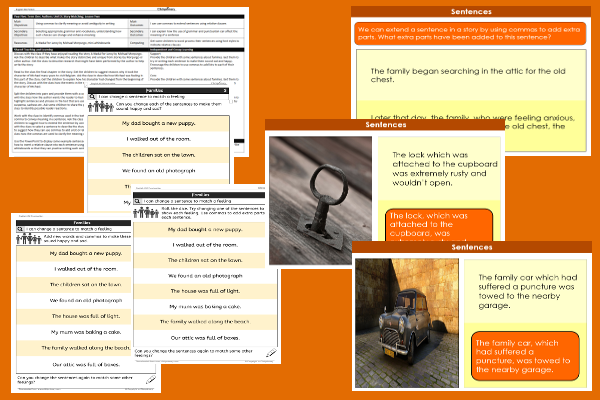Lesson Two – Sentence Commas

This English teaching pack for Key Stage Two gets the children to practise using commas to add extra phrases and clauses to different sentences about some of the events that might be experienced by families in an adventure story.
The class can explain and model how to extend different sentences using commas to add relative clauses to evoke specific emotions in the reader in response to each narrative event.
Download this teaching pack including a lesson plan, classroom activities and an interactive presentation to practise using commas to add extra phrases and clauses to different about sentences some of the events that might be experienced by families in an adventure story
Activities in this teaching pack include a set of differentiated worksheets to identify and record how to use commas to add extra phrases and clauses to different sentences about families to evoke different emotions when illustrating narrative events,
The interactive presentation gets the children to explore how to use commas to add extra phrases and clauses to different sentences about families.
This lesson is part of an English scheme of work to get the children to plan and write a story using different narrative techniques, identify the meanings of words that are homonyms and practise extending sentences by using commas to add extra words and phrases. There are teaching activities for shared learning, differentiated worksheets to support independent learning and interactive presentations to introduce concepts and key skills.
-

Determinant Lists
Explain and model how to make lists of objects used and found in different locations to match the correct determinants of a and an
-

English SPAG Assessment
Assess abilities in composing sentences for fiction and non-fiction using the correct spellings, punctuation marks and grammar vocabulary phrases
-

Maths Arithmetic Assessment
Assess abilities in solving arithmetic number problems for addition, subtraction, multiplication and division when working with informal and formal written calculations
-

Environment
Identify and describe some of the special landscapes and locations that can be found in the world and reflect on how they can be protected and preserved for the future
